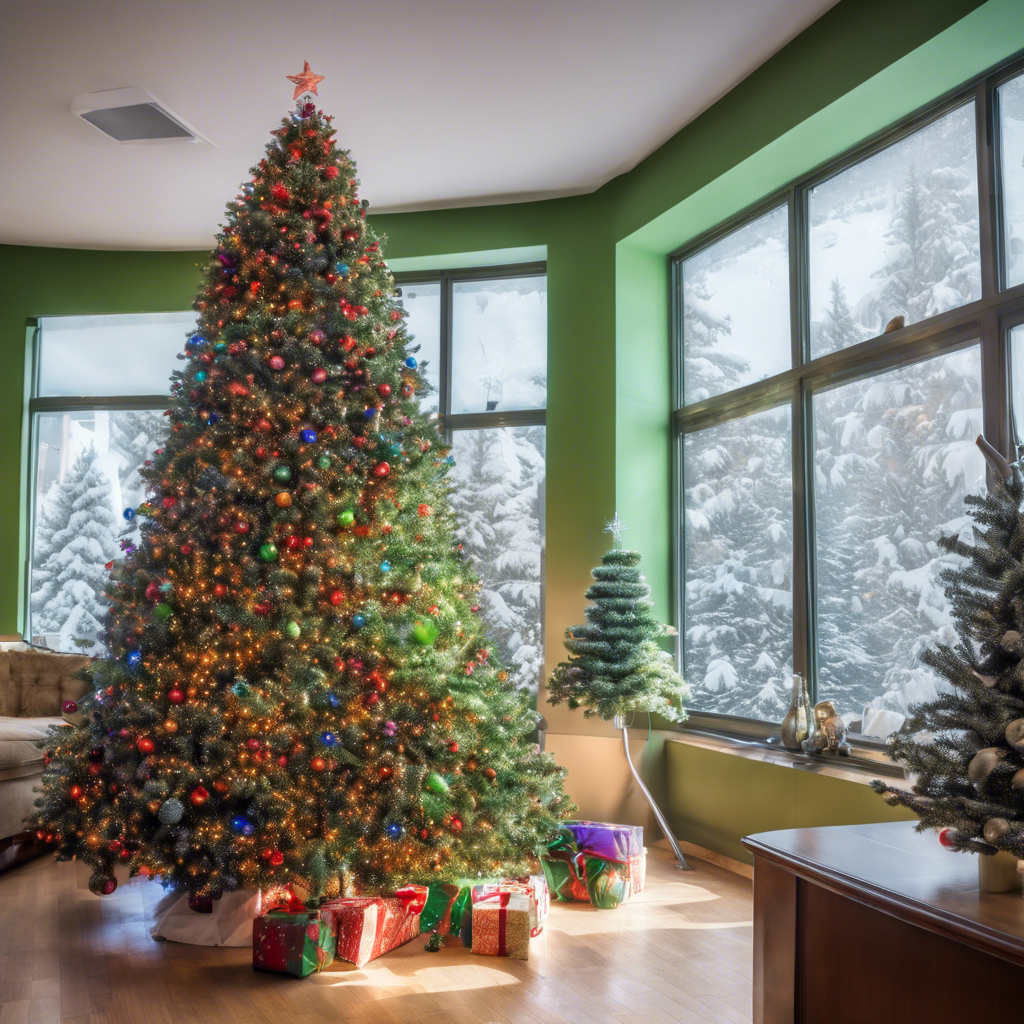A study conducted by the National Institute of Standards and Technology (NIST) investigates the volatile organic compounds (VOCs) emitted by live Christmas trees and their potential impact on indoor air quality.
Every year, millions of Americans bring live Christmas trees into their homes, cherishing not only the beauty of the tree but also the delightful scent it imparts. However, the chemicals responsible for that distinct pine fragrance, known as volatile organic compounds (VOCs), have remained largely unexplored in terms of their emissions and potential health effects. Researchers at the National Institute of Standards and Technology (NIST) sought to shed light on this topic by conducting a comprehensive study on the emissions from live Christmas trees.
The Study:
Led by environmental engineer Dustin Poppendieck, the NIST team selected a common type of Christmas tree, the Douglas fir, and placed it inside a sealed chamber. Over a period of 17 days, they closely monitored and measured the VOCs emitted by the tree, as well as the reactions these compounds had with other indoor air components.
The Findings:
In their study, published in the journal Indoor Environments, the researchers discovered that the primary VOCs emitted by live Christmas trees are monoterpenes, a group of compounds also found in air fresheners, candles, and certain personal care products. Monoterpenes are known to affect outdoor air quality when released by conifers in the natural environment. However, little was known about the quantities emitted by cut trees placed indoors.
During the experiment, the researchers simulated a typical home environment by decorating the tree with holiday lights and subjecting it to a day-night lighting cycle. They also introduced outside air at a rate similar to that found in households. Using proton-transfer reaction mass spectrometry (PTR-MS), a technique capable of detecting airborne organic compounds, they measured the VOC emissions in real-time.
The team found that monoterpenes were the most abundant VOCs emitted by the tree, peaking on the first day and then gradually diminishing by the third day. The concentration of monoterpenes initially matched that of a plug-in air freshener or a newly constructed house before dropping to approximately one-tenth of the original level. In total, the researchers identified 52 distinct types of monoterpenes emitted by the Christmas tree.
To further investigate the impact of indoor air chemistry, the researchers introduced ozone into the chamber. They observed that ozone reacted with the monoterpenes, forming byproducts such as formaldehyde, another type of VOC, and other reactive chemicals. The concentration of monoterpenes decreased even further with the of ozone, while formaldehyde levels rose. However, the amount of formaldehyde created remained relatively small, measuring around one part per billion. In comparison, typical U.S. households have formaldehyde concentrations ranging from 20 to 30 parts per billion.
Implications and Recommendations:
For individuals sensitive to VOCs, the emissions from live Christmas trees may cause watery eyes and runny noses, particularly when the tree is first brought indoors. In such cases, Poppendieck suggests opening a window near the tree to reduce exposure. Additionally, allowing newly cut trees to remain outdoors or in a garage for three days before bringing them into the home can help mitigate the emission strength, as it naturally decays over time.
However, Poppendieck emphasizes that, for most people, the emissions from live Christmas trees should not be a major concern. The study’s findings provide valuable insights into the VOC emissions and indoor air chemistry associated with these trees, allowing individuals to make informed decisions while still enjoying the holiday tradition.
Conclusion:
The NIST study has shed light on the emissions from live Christmas trees, revealing that monoterpenes are the primary VOCs responsible for the characteristic scent. While these emissions may cause discomfort for individuals sensitive to VOCs, the overall impact on indoor air quality is relatively minor. By understanding the emissions and employing simple strategies such as opening windows and allowing trees to air out before bringing them indoors, individuals can continue to enjoy the beauty and fragrance of live Christmas trees without significant health concerns.











